Search
Remove Ads
Advertisement
Summary 
Loading AI-generated summary based on World History Encyclopedia articles ...
Search Results
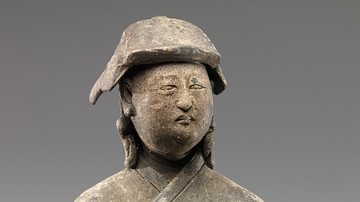
Definition
Yuan Dynasty
The Yuan Dynasty was established by the Mongols and ruled China from 1271 to 1368 CE. Their first emperor was Kublai Khan (r. 1260-1279 CE) who finally defeated the Song Dynasty which had reigned in China since 960 CE. Stability and peace...
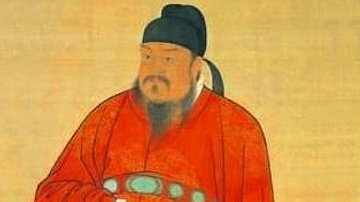
Definition
Emperor Gaozu of Tang
Emperor Gaozu (also Kao-tsu, formerly Li Yuan, r. 618-626 CE) was a Sui military commander who led a rebellion against his former masters, seized control of the state, and founded the Tang Dynasty (618-906 CE). Overshadowed in the ancient...
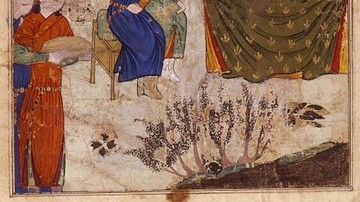
Article
Mongol Multiculturalism
The Mongol Empire accepted and promoted many other cultures. Historians often talk about cultural exchange across Asia in the Mongol Empire as something that was just facilitated by peace and stability across such a huge area – the 'Pax Mongolica'...
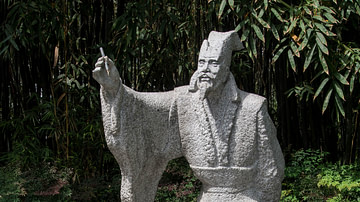
Definition
Bai Juyi
Bai Juyi (l. 772-846) was one of the greatest poets of the Tang Dynasty (618-907) along with Li Po (l. 701-762) and Du Fu (l. 712-770). He was a government official who got in trouble with authorities a number of times for not following the...
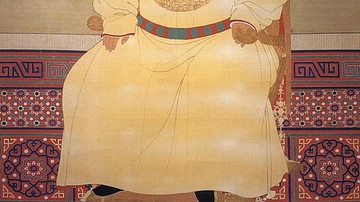
Definition
Hongwu Emperor
The Hongwu Emperor (r. 1368-1398 CE) was the founder of the Ming dynasty (1368-1644 CE) which took over from the Mongol Yuan dynasty (1276-1368 CE) as the rulers of China. Born a peasant with the name Zhu Yuanzhang, the future emperor led...
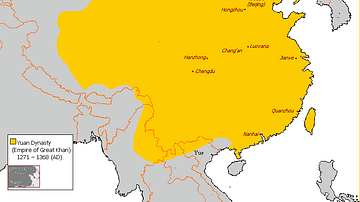
Image
Map of Yuan Dynasty China
A map indicating the territory of the Mongol Yuan dynasty of China (1271-1368 CE).
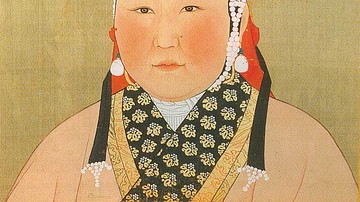
Image
Wife of Yuan Emperor Yingzong
A portrait of an unnamed wife of the Chinese emperor Yingzong of the Mongol Yuan Dynasty (r. 1320-1323).
National Palace Museum, Taipei.
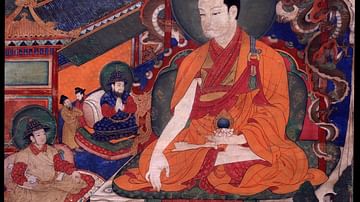
Interview
Rubin Museum's Faith and Empire: Tibetan Buddhist Art
Faith and Empire: Art and Politics in Tibetan Buddhism, a new exhibition at the Rubin Museum of Art in New York, explores the dynamic historical intersection of politics, religion, and art as reflected through Tibetan Buddhism. The exhibition...
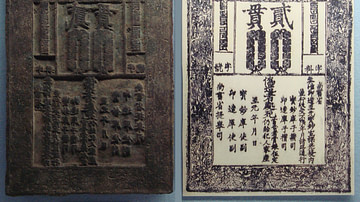
Image
Yuan Dynasty Bank Note & Plate
A 13th century CE wooden printing plate and paper bank note from the Chinese Yuan dynasty (1271-1368 CE). (Tokyo Currency Museum)

Image
Figure of a Mongol, Yuan Dynasty
A detail of a burnished earthenware figurine of a Mongol. Yuan Dynasty, 14th century CE. H. 11 7/16 in. (29 cm); W. 4 7/16 in. (11.3 cm); D. 3 3/8 in. (8.6 cm). (Metropolitan Museum of Art, New York)